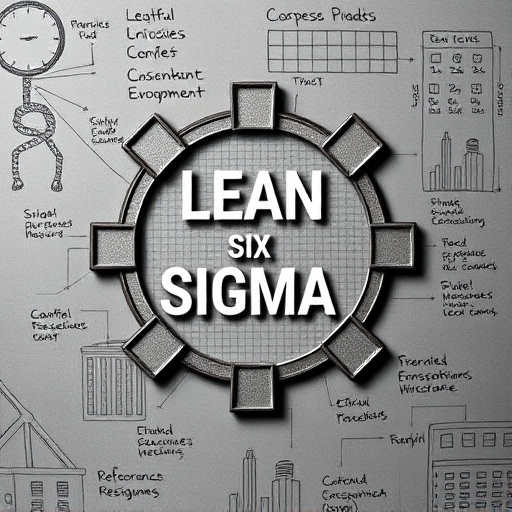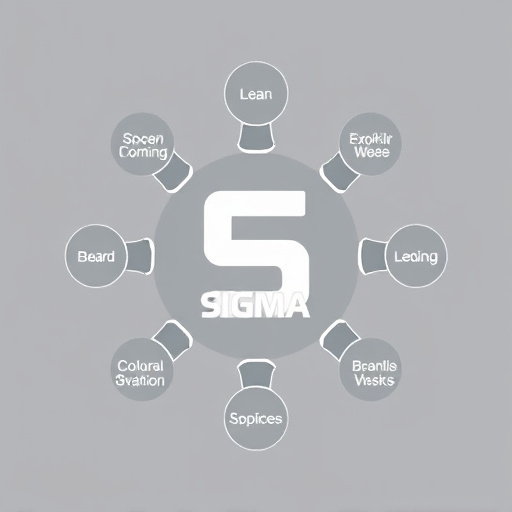Lean Six Sigma methodologies are key to developing effective control plans that prevent product recalls by identifying and managing critical control points (CCPs). This data-driven approach saves costs, enhances customer trust, and ensures sustained high-quality standards through continuous monitoring and adjustments. By breaking down complex processes, setting measurable criteria, and outlining specific actions, organizations can proactively mitigate risks and maintain consumer safety. Case studies demonstrate successful implementations across various industries, reducing defects and boosting product quality.
Control Plans are indispensable tools for manufacturers aiming to prevent product recalls. By integrating Lean Six Sigma principles, businesses can identify and mitigate potential risks proactively, enhancing quality control and consumer safety. This article explores the critical role of Control Plans in mitigating recall impacts on both businesses and consumers. We’ll delve into developing robust plans, implementing continuous improvement strategies, and showcasing successful real-world applications to emphasize their indispensable value in modern manufacturing.
- Understanding Control Plans: A Lean Six Sigma Perspective
- The Impact of Recalls on Businesses and Consumers
- Identifying and Mitigating Risks through Proactive Measures
- Developing an Effective Control Plan: Step-by-Step Guide
- Implementing and Monitoring Controls for Continuous Improvement
- Case Studies: Successful Control Plans in Action
Understanding Control Plans: A Lean Six Sigma Perspective

Control plans are a fundamental component in the Lean Six Sigma framework, an approach that aims to enhance processes and reduce errors. From a Lean Six Sigma perspective, a control plan is a systematic tool designed to monitor and regulate processes, ensuring they maintain stability and meet quality standards. It involves identifying critical control points (CCPs) within a process, which are variables that significantly impact the outcome. By closely monitoring these CCPs, organizations can prevent defects and variations, thereby minimizing the risk of product recalls.
This proactive approach aligns with Lean Six Sigma’s philosophy of continuous improvement. Instead of reacting to issues after they arise, control plans enable businesses to anticipate potential problems and implement corrective actions in real time. This predictive maintenance not only saves costs associated with recalls but also boosts customer trust by demonstrating a commitment to consistent product quality.
The Impact of Recalls on Businesses and Consumers

Recalls can have a profound impact on both businesses and consumers, creating a ripple effect that extends far beyond the initial incident. For businesses, recalls are not just costly but also damage their reputation, erode customer trust, and lead to significant operational disruptions. The financial burden is substantial, encompassing product destruction or disposal costs, reimbursement or replacement expenses for affected customers, and potential legal liabilities. Moreover, the process of identifying the root cause, implementing corrective actions, and communicating transparently with stakeholders demands valuable time and resources.
Consumers, on the other hand, face risks to their health and safety when products they rely on are recalled. Delays in notification or inconsistent communication can exacerbate the issue, leading to unnecessary exposure or even injury. Recalls also disrupt their normal routines, especially if affected products are essential goods or food items. However, proactive measures like rigorous quality control processes, inspired by methodologies like Lean Six Sigma, can significantly minimize recall occurrences, ensuring both business sustainability and consumer safety.
Identifying and Mitigating Risks through Proactive Measures

In the realm of quality control and risk management, identifying and mitigating risks through proactive measures is a cornerstone strategy. Control plans, often developed using Lean Six Sigma methodologies, play a pivotal role in this process. By employing data-driven approaches and rigorous analysis, these plans enable businesses to anticipate potential issues before they escalate, thereby preventing costly product recalls.
Lean Six Sigma, with its emphasis on process efficiency and customer satisfaction, provides a structured framework for identifying root causes of defects and implementing effective control measures. Through continuous monitoring and adjustments, companies can maintain high-quality standards, ensure regulatory compliance, and foster a culture of proactive risk management. This, in turn, translates to enhanced consumer trust and market competitiveness.
Developing an Effective Control Plan: Step-by-Step Guide

Developing an Effective Control Plan: A Step-by-Step Guide
The first step in creating a robust control plan is to identify and define the process or product area that requires monitoring. This involves breaking down complex processes into smaller, manageable components using Lean Six Sigma methodologies. By understanding every step and potential point of variation, you can pinpoint where errors are most likely to occur. Next, establish measurable criteria for each critical control point (CCP). These CCPs are the key areas that, when properly controlled, will prevent defects and ensure product or service quality.
Once the CCPs are identified, a control plan should be drafted outlining specific actions and responsibilities. This includes setting action levels, defining acceptable limits, and establishing monitoring procedures. Regular review and continuous improvement are essential; conduct periodic assessments to verify that the control plan remains effective. By following this structured approach, organizations can proactively manage risks, minimize defects, and ultimately prevent costly product recalls.
Implementing and Monitoring Controls for Continuous Improvement

Implementing control plans involves a structured approach, rooted in methodologies like Lean Six Sigma, to identify and mitigate potential risks. This process begins with a thorough analysis of existing processes, identifying weak points and areas where non-conformities are likely to occur. By applying lean principles to streamline workflows and reduce waste, businesses can create more efficient systems that minimize errors.
Monitoring these controls is an ongoing task that ensures the continuous improvement of quality management. Regular audits and data analysis play a crucial role here. Through statistical process control (SPC) techniques, deviations from established standards can be quickly detected, allowing for immediate corrective actions. This proactive approach not only prevents recalls but also fosters a culture of quality assurance within the organization.
Case Studies: Successful Control Plans in Action

Successful control plans are a testament to their effectiveness in preventing recalls, particularly within the framework of Lean Six Sigma methodologies. Case studies from various industries illustrate how well-designed control plans can significantly reduce defects and enhance product quality. For instance, one automotive manufacturer implemented a control plan focusing on rigorous material testing and equipment calibration. This initiative led to a 30% drop in production defects, thereby minimizing the risk of costly recalls.
Another notable example is a food processing company that employed Lean Six Sigma principles to streamline its packaging process. By establishing clear quality standards and implementing regular audits, they achieved a remarkable 99.9% accuracy rate in package sealing. This level of precision virtually eliminated packaging-related product damage, which is a common cause of recalls, ensuring consumer safety and satisfaction.
Control plans, rooted in Lean Six Sigma methodologies, are instrumental in preventing product recalls. By proactively identifying and mitigating risks, these plans empower businesses to maintain consumer trust and safeguard their reputation. Through a structured approach, from understanding control plans to continuous monitoring, organizations can ensure product quality and safety, ultimately enhancing customer satisfaction and fostering long-term success in the market.
